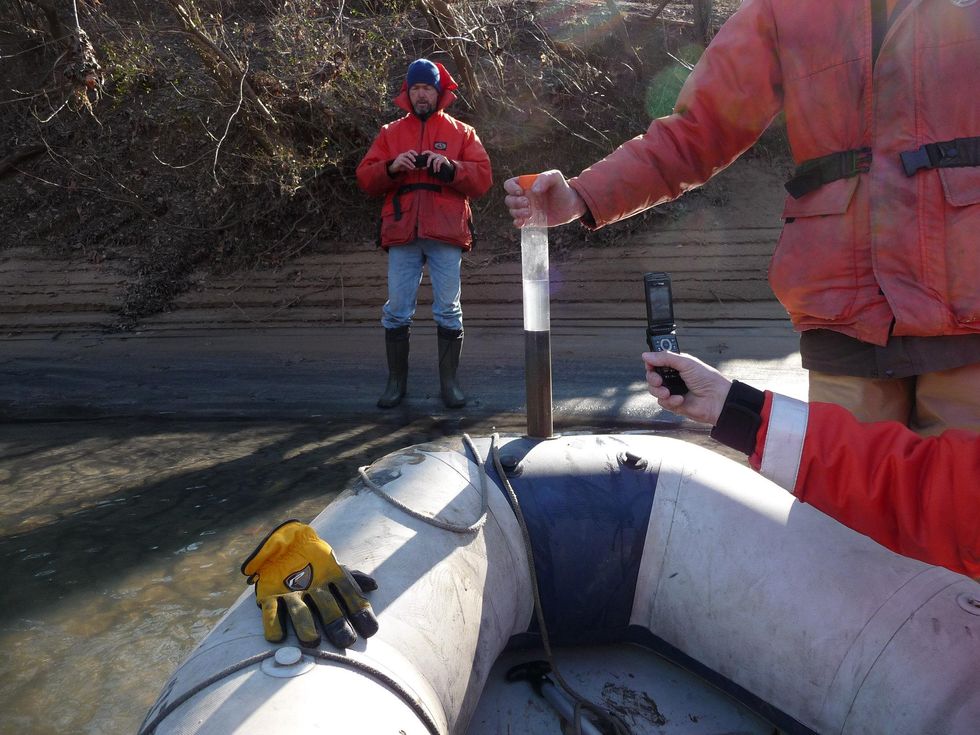
Former coal plant near Pittsburgh is poisoning groundwater: Report
Groundwater near the site contains arsenic levels 372 times higher than safety threshold. Coal ash sites across the U.S. are seeing similar contamination.
PITTSBURGH—The site of a former coal-fired power plant northwest of Pittsburgh is leaking coal ash and poisoning surrounding groundwater, according to a new report.
Coal ash, the material left behind after coal is burned, contains harmful substances like arsenic, cadmium, chromium, lead, lithium, mercury and uranium, among others. Exposure is linked to health effects like cancer, damage to the thyroid, liver and kidneys, and neurodevelopmental problems in children.
Although coal consumption has declined across the U.S., the power industry continues to generate about 70 million tons of coal ash annually, and after 100 years of burning coal, U.S. power plants have generated about five billion tons of coal ash.
The new report, published by the environmental law advocacy groups Environmental Integrity Project and EarthJustice, found that 91% of U.S. coal-fired plants have ash landfills or waste ponds that are leaking toxic chemicals and heavy metals into surrounding groundwater at levels that threaten streams, rivers and drinking water aquifers. It also found that many coal plant owners manipulate data or incorrectly claim exemptions to regulations to avoid having to clean up contamination.
“Coal plants are polluting the nation’s water illegally and getting away with it,” Lisa Evans, a senior attorney at Earthjustice and coauthor of the report, said during a news briefing. “At least 91% of them are poisoning our water with hazardous toxics and doing little or nothing to address it. This is illegal.”
The report ranks the top 10 worst contaminated coal ash sites in the country. GenOn’s New Castle Generating Plant, about 46 miles northwest of Pittsburgh, ranks sixth on the list. Groundwater near the site contains arsenic levels 372 times higher than the U.S. Environmental Protection Agency’s, or EPA’s, safety threshold, and lithium levels 54 times higher.
Arsenic exposure is linked to multiple forms of cancer, neurological impairments in children and skin conditions. Lithium exposure is linked to kidney and neurological damage, decreased thyroid function and birth defects. The GenOn plant sits along the Beaver River, which feeds into the Ohio River, which, in turn, provides drinking water to more than five million people.

U.S. Fish and Wildlife Service taking core samples after North Carolina's Dan River coal ash spill in 2014.
Credit: USFWS
“In addition to the Ohio River being an important source of drinking water to many Americans, people in the region also love to fish, swim and boat out in these waters,” Zach Barber, a community organizer with environmental advocacy group PennEnvironment, who was not involved with the report, told EHN. “This pollution poses real risks that are not being taken seriously by these companies or our regulators.”
The GenOn site, which has approximately 50 acres of coal ash landfill containing about three million tons of ash, is the only location in Pennsylvania to make the report’s top 10 list. It follows coal ash dumps in Texas, Nevada, North Carolina and Wyoming (two sites), and ranks worse than sites in Maryland, Mississippi, Utah and Tennessee. The most polluted site in the nation is the San Miguel Electric Plant south of San Antonio, Texas. The report, an update to a 2019 report on coal ash sites, also details groundwater contamination at 292 additional coal plants in 43 states.
“Coal ash waste is causing widespread water contamination that threatens drinking water supplies and the environment,” Lisa Evans, senior attorney at Earthjustice, said in a statement. “In every state where coal is burned, power companies are violating federal health protections.”
Manipulating data to hide poisonous pollution
In 2015, in response to nearly 160 cases of water contamination and several catastrophic coal ash spills, the EPA established the first-ever regulations governing coal ash disposal collectively referred to as the Coal Ash Rule.
The rule required sites disposing of coal ash to post groundwater monitoring reports on their websites. There’s no federal database of these notices, so the authors of the report collected and analyzed the data to create their own. They concluded that many power companies are illegally manipulating data and monitoring to avoid cleanup requirements.
Companies are supposed to collect samples from clean background wells that aren’t near coal ash disposal sites to compare against wells on site. But they found that companies often chose previously contaminated sites to use as background wells, making it harder to find evidence of coal ash pollution. Many plants also leave large parts of a disposal area unmonitored, use inappropriate statistical methods to hide patterns of contamination, and falsely attribute the contamination to another source, according to the report.
“Coal plant owners are deliberately employing tricks to hide coal ash pollution,” Evans said. “People live next to these ponds. People drink the groundwater. Families use the lakes and streams next to these ponds. Leaving ash will make people sick and harm the water they depend on…but pennies over people has always been the norm where coal ash is concerned.”
Some plant owners, including the owners of GenOn’s former New Castle Plant, say the sites were already contaminated before they arrived, so they shouldn’t be responsible for cleanup, according to the report. GenOn’s New Castle Plant landfill was built on top of an 80-year-old, 120-acre ash pond, and the company is only claiming responsibility for a small part of the landfill, according to the document.
“GenOn must apply the Rule to the landfill as a whole,” the report concludes. “This approach is not only legally required, but also common sense – there is no way to restore groundwater at the site without addressing all of the coal ash known to be buried there.”
Pennsylvania Department of Environmental Protection (DEP) spokesperson Jamar Thrasher told EHN the agency supports the EPA's enforcement of the Coal Ash Rule by checking compliance with reporting requirements and deadlines for closure or upgrades. In 2020, the DEP issued a Notice of Violation for groundwater contamination and asked GenOn to address it. The company agreed, and remediation is underway, according to Thrasher, who said the cleanup plan recommends two more years of groundwater monitoring to determine whether the cleanup measures taken so far have been effective.
GenOn did not immediately respond to a request for comment. It isn’t the only company avoiding responsibility: The report found that at nearly half of the plants causing contamination, owners are not planning any cleanup, and most have denied responsibility. Of the plants that have agreed cleanup is necessary, only a handful have cleanup plans in place, and most lack clear timelines and fall short of federal standards.
The report also notes that most coal plants are located in or near environmental justice communities (communities that are primarily made up of low-income residents and/or people of color), and that 70% of coal ash ponds that are dangerously close to groundwater are located in communities that are primarily Black or brown.
How can we fix this?
Both state agencies and the EPA have authority to enforce the Coal Ash Rule. In a few states, state regulatory agencies are actively working to enforce the rule, according to Evans, while other states rely on the EPA.
The report recommends a number of solutions, including increased federal oversight to stop coal companies from manipulating data and improperly claiming exemptions, implementing enforceable cleanup schedules, closing loopholes for sites that are no longer operational, requiring testing of drinking water near coal ash dumps and banning dangerous re-use of coal ash (such as using it as a soil substitute).
“The first place to start is enforcing the rules we already have on the books,” Barber said. “But the only way to completely protect people from the health harms of coal is to leave it in the ground and switch to cleaner, renewable sources of energy.”













